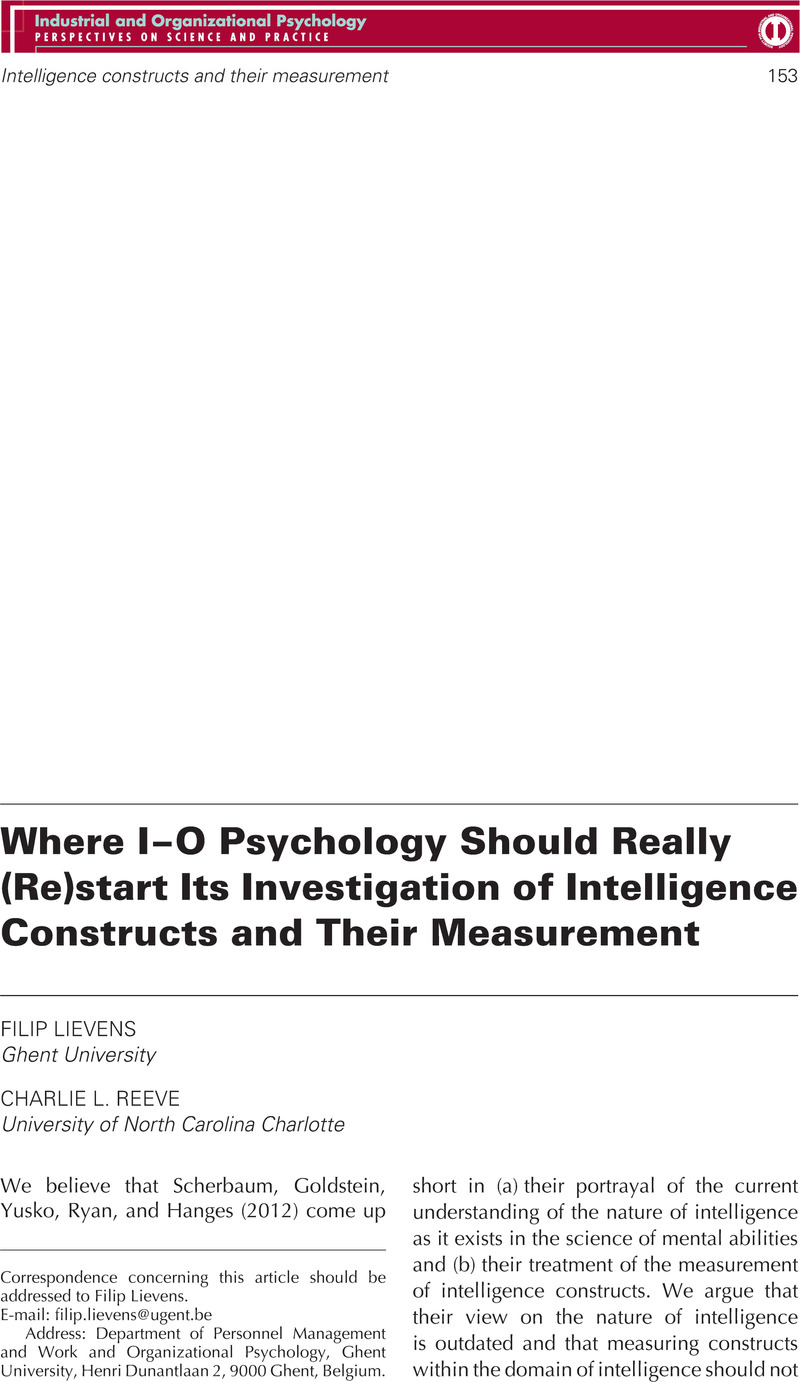Crossref Citations
This article has been cited by the following publications. This list is generated based on data provided by Crossref.
Hanges, Paul J.
Scherbaum, Charles A.
Goldstein, Harold W.
Ryan, Rachel
and
Yusko, Kenneth P.
2012.
I–O Psychology and Intelligence: A Starting Point Established.
Industrial and Organizational Psychology,
Vol. 5,
Issue. 2,
p.
189.
Soete, Britt De
Lievens, Filip
and
Druart, Celina
2013.
Strategies for dealing with the diversity-validity dilemma in personnel selection: Where are we and where should we go?.
Revista de Psicología del Trabajo y de las Organizaciones,
Vol. 29,
Issue. 1,
p.
3.
Hanges, Paul J.
Scherbaum, Charles A.
and
Reeve, Charlie L.
2015.
There Are More Things in Heaven and Earth, Horatio, Than DGF.
Industrial and Organizational Psychology,
Vol. 8,
Issue. 3,
p.
472.
Reeve, Charlie L.
Scherbaum, Charles
and
Goldstein, Harold
2015.
Manifestations of intelligence: Expanding the measurement space to reconsider specific cognitive abilities.
Human Resource Management Review,
Vol. 25,
Issue. 1,
p.
28.
Bosco, Frank
Allen, David G.
and
Singh, Kulraj
2015.
Executive Attention: An Alternative Perspective on General Mental Ability, Performance, and Subgroup Differences.
Personnel Psychology,
Vol. 68,
Issue. 4,
p.
859.
Gonzalez-Mulé, Erik
Carter, Kameron M.
and
Mount, Michael K.
2017.
Are smarter people happier? Meta-analyses of the relationships between general mental ability and job and life satisfaction.
Journal of Vocational Behavior,
Vol. 99,
Issue. ,
p.
146.
Kell, Harrison J.
and
Lang, Jonas W. B.
2018.
The Great Debate: General Ability and Specific Abilities in the Prediction of Important Outcomes.
Journal of Intelligence,
Vol. 6,
Issue. 3,
p.
39.
Mainert, Jakob
Niepel, Christoph
Murphy, Kevin R.
and
Greiff, Samuel
2019.
The Incremental Contribution of Complex Problem-Solving Skills to the Prediction of Job Level, Job Complexity, and Salary.
Journal of Business and Psychology,
Vol. 34,
Issue. 6,
p.
825.
Blacksmith, Nikki
Yang, Yongwei
Behrend, Tara S.
and
Ruark, Gregory A.
2019.
Assessing the validity of inferences from scores on the cognitive reflection test.
Journal of Behavioral Decision Making,
Vol. 32,
Issue. 5,
p.
599.
Bipp, Tanja
Wee, Serena
Walczok, Marvin
and
Hansal, Laura
2024.
The Relationship Between Game-Related Assessment and Traditional Measures of Cognitive Ability—A Meta-Analysis.
Journal of Intelligence,
Vol. 12,
Issue. 12,
p.
129.



